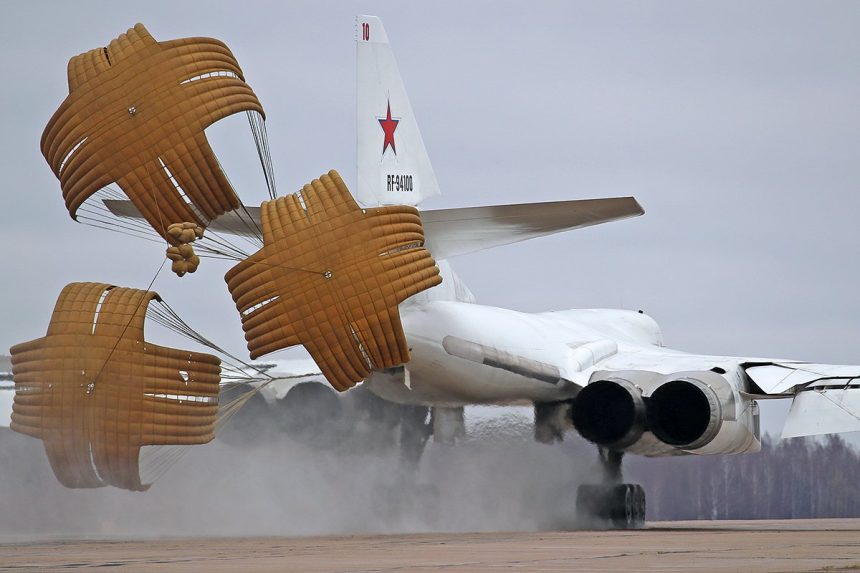The three chutes deploy from the tail of the “White Swan” to reduce the landing roll. Many aircraft still use such braking system.
The Russian Ministry of Defense has recently shared the above shot.
It shows a Tupolev Tu-160 Blackjack, also known as the “White Swan”, under the braking action of the three drag chutes that deploy from the aircraft’s tail. With a total area of 105 sqm (1,130 sq ft), the three parachutes are used to provide additional breaking action and to reduce the landing roll.
Drag (or drogue) chutes are a quite common design trait of the Soviet-made jets, even though many western aircraft use them too. The system consists of a single or several parachutes (for instance, the B-52 uses one, the Su-24 Fencer uses two, etc.) placed in a special pod or fairing located in the rear section of the fuselage. The chute is ejected with the use of a smaller parachute, spring-driven or compressed air based system.
With a landing weight of between 140,000 and 155,000 kg (341,716 lb), the heavy Russian bomber may require a landing distance between 1,200 and 1,600 m (3,937 – 5,250 ft). The braking action of the drag chute(s) help the aircraft stop quicker: generally speaking these parachutes can be particularly useful as the aircraft is not equipped with thrust reversers; for landing on shorter runways or when the runway is covered with rain, ice or snow, in order to reduce speed before applying wheel brakes. The latter can become hot and take fire, posing a risk for the aircraft itself.
After the aircraft comes to a halt and has vacated the runway, the chute is jettisoned and recovered by ground personnel.
Some aircraft can deploy the drag chute before touch down (some feets above the runway), a technique used to land on a damaged runway.
Notably, the drag created by drogue chutes is lower than the one experienced in case of the conventional drop-parachutes in order to prevent damage to the aircraft.
Noteworthy, the drag chutes are most of times colored in yellow or orange; early F-117s used rather unusual black drag chutes.
As already explained, many other aircraft use a drag chute. The Royal Norwegian Air Force is going to equip its F-35A with a drag chute system and verification testing was conducted at Ørland Air Base last year. The system is housed under a small fairing on the upper rear fuselage between the vertical tails and can be used to rapidly decelerate Norwegian F-35s after landing on the country’s icy runways under windy conditions.









